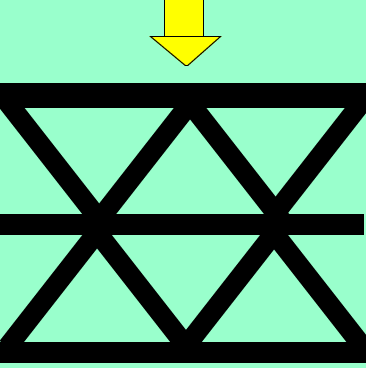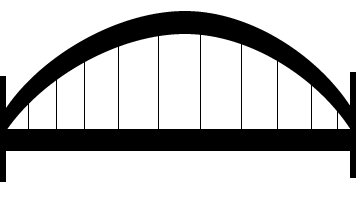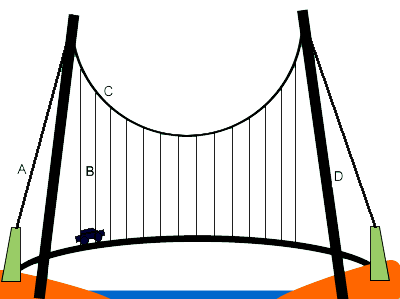Bridges
Distributing the force


Forces acting on a triangulated structure result in either compression or tension.
Tensile forces stretch the members of a structure and try to make them longer.
Compression forces squeeze the members along their length and try to make them shorter.
Notice how the load acting on this structure is changed to tensile (red) and compression (yellow) forces in the diagonal and horizontal members



The combined mass of the roadway and the vehicle on the bridge is supported by cables anchored to concrete blocks at each end of the bridge.
At each point "A", "B", "C" and "D" draw the direction in which the force is acting and label the force as tensile (pull) or compression (push).